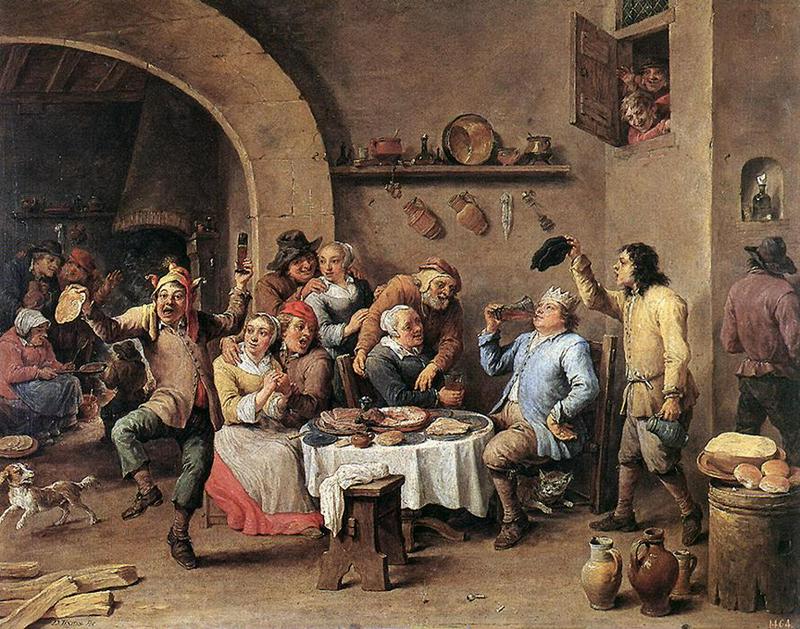Beer: Yesteryear's Energy Drink
By | May 6, 2019

Nowadays, if you saw a child, say under the age of five, chugging down a beer at a restaurant not only might you feel disturbed, but you may call the police or child protective services.
Curiously, for most of history, it was commonplace for people of all ages to imbibe large quantities of beer. For example, in 1558 at Stockholm Castle one researcher calculated that each person drank over a gallon daily. In feudal England, a peasant may have consumed about one gallon of ale per day. When Europeans first colonized North America, the Arbella brought 10,000 gallons of English beer to the colonies. One colonial promoter noted that while the waters of the New World were the best in the world, “I dare not prefer it before a good Beere.” Royal Navy sailors were rationed two gallons of beer per day.
Was everybody in the past just sloshed all the time? The answer is no.

The beer of choice from antiquity to the present is what is called small beer. Small beer is a watered-down version of the more potent stuff made with the leftover mash from brewing stronger beer or simply beer that was diluted with water. It typically has an alcohol by volume of less than 1%. In comparison, Budweiser is 4.2% and Guinness is 4.27%. Small beer could be compared to O’Douls non-alcoholic beer, which has trace amounts of alcohol at .5%.
So why were people drinking all this beer if not for the buzz?

There is a long-held misconception that people historically preferred alcohol over water because of the fear of contaminated drinking water supplies. Yet people did not even consider water as a breeding ground of disease until the 19th century. People before that time drank water just as eagerly as beer or wine, and most water sources were clean. Public works were built to bring water into cities, countries were not building public distilleries.
The matter really has to do with calories and taste.

Beer is loaded with calories and small beer was chock full of them. For people who lived physically demanding lives, such as aboard ships or on farms, small beer was a way in which to provide calories and hydration simultaneously. A medieval peasant, for example, burned up to 5,000 calories per day while the FDA recommendation for modern Americans is 2,000 calories per day. Peasants, sailors, and laborers drank small beer, not for nutrition but to provide needed energy to meet high caloric demands. It was viewed as food, and since the alcohol content was so low, it was considered safe for any age.
Traditionally, small beer was brewed at home. George Washington himself had a personal recipe for small beer which had a good infusion of molasses, although it evidently had a higher alcohol content than typical small beer.

Below is George Washington’s recipe for small beer as published by the New York Public Library. And yes, it does say to let it stand till it is "little more than Blood warm."
Take a large Sifter full of Bran Hops to your Taste -- Boil these 3 hours. Then strain out 30 Gall. into a Cooler put in 3 Gallons Molasses while the Beer is scalding hot or rather drain the molasses into the Cooler. Strain the Beer on it while boiling hot let this stand til it is little more than Blood warm. Then put in a quart of Yeast if the weather is very cold cover it over with a Blanket. Let it work in the Cooler 24 hours then put it into the Cask. leave the Bung open til it is almost done working -- Bottle it that day Week it was Brewed.
While I cannot personally attest to the Founding Brewer’s recipe, there are mixed reviews across the internet.
Bottoms up!

